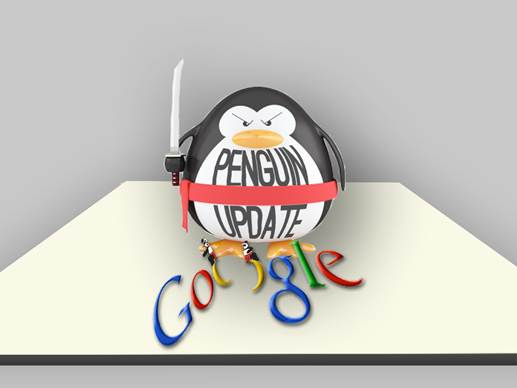I woke up this morning and my life clock marked 30. My first
sleep-deprived idea was to pack a small suitcase, get on the first
train, move to another country, change my name, change my hair color (or
get plastic surgery if needed), and start from scratch. When I don’t
know how to deal with life, I sometimes hide. Other times, I fight.
By now, I’m good at both fighting and disappearing. I’m old enough to be acquainted with life’s darkest and most elevated places, and young enough to take more. But there’s no merit to either, fighting or flying, if they don’t come as a result of one’s deepest truth. When fueled by fear both responses are cowardly, both are equally wrong.
So after I washed my face and considered the costs of running and those of fighting, I decided not to do either. I started contemplating a third alternative.
I decided to re-evaluate the meaning of life and knock on doors I don’t have a key for, to come up with 30 questions that we should all ask ourselves before we die. Many of us get to 30, 40, 50 or beyond spending our entire lives as strangers to ourselves.
1. How much have you loved? Count the people. When it comes to love, I’ve been so focused on the minuses, I have no idea how to answer this; and these minuses are all based on not-enoughness. So if you’re in the red too, let’s put the ball back in our court. How much have you loved? Have you loved even when it hurts, when you can’t, when you shouldn’t, when you wouldn’t, when you didn’t? If so, you’re richer than you feel.
2. What do you love doing that you aren’t doing? Furthermore, how could you get paid for doing what you love? Let’s brainstorm. It’s your right to be alive every second of the day. You’re not supposed to spend eight hours in chains and the remaining four getting high on mental and physical distraction to cope with the depression of not doing what you should, what you want, what you need to be doing.
3. What person or type of person would you choose as a life companion? A witness to your life? Forget the shoulds, the can’ts, the won’ts, the impossibles. Who would you love and who would love you back if you could have a say in it? Cause see, your say in this makes all the difference. When you say your dreams out loud, you turn on the engine. It’s like this whole life is waiting to come rushing out of you and in wishing it — out loud — you open the gates and give it permission to happen.
4. Where do you want to live? Are you happy with your life where you are? Could you be happier somewhere else? It’s true that you can be home wherever you are. But it’s also true that some places are more in tune with the kind of life that comes bursting out of you. There’s nothing more inspiring and motivating than good company and an environment that reflect and support your mission.
(MORE: Is Your Hometown a Place to Grow Old? Mine Is)
5. What do you want to accomplish? And most important, why — what’s your motivation? Be unrealistic. Life itself is unrealistic.
6. What do you want to be remembered by? Write it down. This is the man/woman who _______________. Take your time.
7. What kind of life would make you jealous? And why? If you could start over, what would your life look like, right now? (Psst … Don’t let your doubts in on this yet – they’re gonna’ ruin everything.)
8. What adventures do you want to have? Can you list five? Adventures aren’t just for children — or maybe the 10-year-old in us never dies. And it’s that inner child that really loves and lives life for what it is: the greatest adventure in the universe.
9. If you had to add something to humanity, what would your contribution be? List at least one thing. The world doesn’t owe you. You owe the world. The good news is that whatever the answer to this question, you’ll enjoy doing it.
10. What are your ghosts? Your unspoken demons? The stuff you keep in your closet under a lock? What are you most deeply afraid of? Say it out loud. Get real with yourself. It’s how you conquer them.
11. What are your favorite memories? Can you picture four or five instances in your childhood you are fond of? What’s the common denominator that lies at the core of them? There is usually only one or two life-altering statements that come up when you dig. How can you transform your current experiences so they begin with that same idea?
12. Who do you love the most? What 10 people would you put on a lifeboat in case of a universal tsunami, asteroid or any other realistic end-of-the-world event? Make a list. You can have a million friends on Facebook, but at the end of the day, you’re lucky if you can find 10 people you would die for and who would die for you. Email them as soon as you can. Remind them that if the world ends tomorrow, they’d be on your lifeboat.
13. What worries you the most? Worry comes from fear. And most fear is imaginary. So what are you worried about?
14. What type of people inspire you and make you come alive? What people at this point in your life add to the truest equation of you? Reach out to them, get closer, “touch” them, spend time with them, be around them. Aliveness is the one virus you always need to catch.
(MORE: How to Break Up With a Friend)
15. What type of people bring you down and make you hate yourself? Break up with them. Today. It’s not rejection, it’s just selection. You must not invest your love in people who don’t want it and who use it to deplete you. Love is the most elevated, beautiful transaction between two creatures. But it’s still a transaction. You are responsible for your heart’s investments.
16. Who are your mentors? What have they taught you? Can you make a list? If you know them personally, thank the writers, thinkers, teachers, people who’ve shown you the way. You owe them a mention on your lips and in your heart; and you must pay the inspiration forward. It’s contagious and fuels you.
17. What is your cosmic elevator pitch? Not your job description, professional bio, resume, About page. In short, who are you – raw, unedited, wild, ordinary and extraordinary you?
18. What issues can you help with? We’re in trouble as a planet, as a species, as a global community and as individuals. If you want to live here, you need to pay the toll of helping out. Don’t worry, others will help clean your mess, too. It’s how it goes with humans. They mirror each other, for better or worse.
19. How can you express yourself creatively? Starting with the belief that we are all creative animals by nature, what’s your medium? Art of any kind speaks directly to the heart. It doesn’t go through reason. You need to speak Art if you want to understand Heart. So pick a medium and start practicing.
20. How do you manage your time? What works for you? If you’re a mess, how can you get it together? Here are some creative tips on productivity. Can you make a schedule, write down your routine (to help you stick to it), come up with a productivity credo of some sort?
21. If you were to leave the world today, what is your manifesto? What would you tell your children if you were forced to abandon them unexpectedly? Tell them what you would want them to know about you now.
22. What makes you come alive? What ignites you? What makes you forget time, and space, and love, and food and water and even why – if taken to extreme? As Bukowski put it, “Find out what you love and let it kill you.” (Or resurrect you.)
23. What are your most painful memories? Are you still replaying them in your mind and using them as an excuse to fuel your fear of getting hurt again? Do you think they might be keeping you from trusting your heart again?
24. Why do you eat the way you eat and the things you eat? What do you think you should eat that you’re not eating – and why? What can you put in your body that gives you pleasure and also respects and nourishes it? If you don’t know, find out. You can’t honor life if you don’t eat what cultivates it.
25. What ignites your brain? Can you add more of that to your everyday life? Get smarter? Train your brain? Evolve? Don’t waste your precious time on meaningless entertainment that numbs your mind and makes you smaller.
26. What physical exercise makes you sweat like you mean it and enjoy both the process and the feeling afterward? If you’re not currently practicing it, can you read more about it, surround yourself with people who practice it, sign up for a class, do whatever will motivate you to take it on?
27. What does your body need in order to function at its best? Can you make a list of what makes you feel healthiest and function optimally and try to practice it every day? If you’re not sure, start experimenting.
28. What feeds your spirit? What gives you goosebumps? What makes you fall down to your knees in awe? Is it God? Religion? The universe? Science? Starry nights? Music? Art? Animals? Whatever it is, it should surpass your understanding — there is no awe without mystery.
(MORE: Why Boomers Need to Ride Roller Coasters)
29. What are you proud of so far? What have you accomplished? Don’t compare yourself to others. There will always be someone who’s done “more” and some who’s done “less.” But what can you, at this point in your life (your circumstances, your reality), give yourself a hug for? Do it.
30. Fast-forward to your epitaph. What does it say? As a place-holder, let’s paraphrase Jack Kerouac: “They lived and loved and asked, blessed and adventured … and they weren’t sorry.”
So, what is the meaning of life?
Being able to sit with it and realize that you’re rich because you have a universe inside you that you can reach at any given moment.
Your world is constantly being created through you and there is no meaning outside of you that won’t take your deepest, greatest truth in consideration. Skip love, money or fame if they don’t come as a result of your life-driving truth – they’re the roof to your inner house, and to add a roof you must first discover, understand and create that house. If you don’t know where to start building, just ask.
By now, I’m good at both fighting and disappearing. I’m old enough to be acquainted with life’s darkest and most elevated places, and young enough to take more. But there’s no merit to either, fighting or flying, if they don’t come as a result of one’s deepest truth. When fueled by fear both responses are cowardly, both are equally wrong.
So after I washed my face and considered the costs of running and those of fighting, I decided not to do either. I started contemplating a third alternative.
I decided to re-evaluate the meaning of life and knock on doors I don’t have a key for, to come up with 30 questions that we should all ask ourselves before we die. Many of us get to 30, 40, 50 or beyond spending our entire lives as strangers to ourselves.
1. How much have you loved? Count the people. When it comes to love, I’ve been so focused on the minuses, I have no idea how to answer this; and these minuses are all based on not-enoughness. So if you’re in the red too, let’s put the ball back in our court. How much have you loved? Have you loved even when it hurts, when you can’t, when you shouldn’t, when you wouldn’t, when you didn’t? If so, you’re richer than you feel.
2. What do you love doing that you aren’t doing? Furthermore, how could you get paid for doing what you love? Let’s brainstorm. It’s your right to be alive every second of the day. You’re not supposed to spend eight hours in chains and the remaining four getting high on mental and physical distraction to cope with the depression of not doing what you should, what you want, what you need to be doing.
3. What person or type of person would you choose as a life companion? A witness to your life? Forget the shoulds, the can’ts, the won’ts, the impossibles. Who would you love and who would love you back if you could have a say in it? Cause see, your say in this makes all the difference. When you say your dreams out loud, you turn on the engine. It’s like this whole life is waiting to come rushing out of you and in wishing it — out loud — you open the gates and give it permission to happen.
4. Where do you want to live? Are you happy with your life where you are? Could you be happier somewhere else? It’s true that you can be home wherever you are. But it’s also true that some places are more in tune with the kind of life that comes bursting out of you. There’s nothing more inspiring and motivating than good company and an environment that reflect and support your mission.
(MORE: Is Your Hometown a Place to Grow Old? Mine Is)
5. What do you want to accomplish? And most important, why — what’s your motivation? Be unrealistic. Life itself is unrealistic.
6. What do you want to be remembered by? Write it down. This is the man/woman who _______________. Take your time.
7. What kind of life would make you jealous? And why? If you could start over, what would your life look like, right now? (Psst … Don’t let your doubts in on this yet – they’re gonna’ ruin everything.)
8. What adventures do you want to have? Can you list five? Adventures aren’t just for children — or maybe the 10-year-old in us never dies. And it’s that inner child that really loves and lives life for what it is: the greatest adventure in the universe.
9. If you had to add something to humanity, what would your contribution be? List at least one thing. The world doesn’t owe you. You owe the world. The good news is that whatever the answer to this question, you’ll enjoy doing it.
10. What are your ghosts? Your unspoken demons? The stuff you keep in your closet under a lock? What are you most deeply afraid of? Say it out loud. Get real with yourself. It’s how you conquer them.
11. What are your favorite memories? Can you picture four or five instances in your childhood you are fond of? What’s the common denominator that lies at the core of them? There is usually only one or two life-altering statements that come up when you dig. How can you transform your current experiences so they begin with that same idea?
12. Who do you love the most? What 10 people would you put on a lifeboat in case of a universal tsunami, asteroid or any other realistic end-of-the-world event? Make a list. You can have a million friends on Facebook, but at the end of the day, you’re lucky if you can find 10 people you would die for and who would die for you. Email them as soon as you can. Remind them that if the world ends tomorrow, they’d be on your lifeboat.
13. What worries you the most? Worry comes from fear. And most fear is imaginary. So what are you worried about?
14. What type of people inspire you and make you come alive? What people at this point in your life add to the truest equation of you? Reach out to them, get closer, “touch” them, spend time with them, be around them. Aliveness is the one virus you always need to catch.
(MORE: How to Break Up With a Friend)
15. What type of people bring you down and make you hate yourself? Break up with them. Today. It’s not rejection, it’s just selection. You must not invest your love in people who don’t want it and who use it to deplete you. Love is the most elevated, beautiful transaction between two creatures. But it’s still a transaction. You are responsible for your heart’s investments.
16. Who are your mentors? What have they taught you? Can you make a list? If you know them personally, thank the writers, thinkers, teachers, people who’ve shown you the way. You owe them a mention on your lips and in your heart; and you must pay the inspiration forward. It’s contagious and fuels you.
17. What is your cosmic elevator pitch? Not your job description, professional bio, resume, About page. In short, who are you – raw, unedited, wild, ordinary and extraordinary you?
18. What issues can you help with? We’re in trouble as a planet, as a species, as a global community and as individuals. If you want to live here, you need to pay the toll of helping out. Don’t worry, others will help clean your mess, too. It’s how it goes with humans. They mirror each other, for better or worse.
19. How can you express yourself creatively? Starting with the belief that we are all creative animals by nature, what’s your medium? Art of any kind speaks directly to the heart. It doesn’t go through reason. You need to speak Art if you want to understand Heart. So pick a medium and start practicing.
20. How do you manage your time? What works for you? If you’re a mess, how can you get it together? Here are some creative tips on productivity. Can you make a schedule, write down your routine (to help you stick to it), come up with a productivity credo of some sort?
21. If you were to leave the world today, what is your manifesto? What would you tell your children if you were forced to abandon them unexpectedly? Tell them what you would want them to know about you now.
22. What makes you come alive? What ignites you? What makes you forget time, and space, and love, and food and water and even why – if taken to extreme? As Bukowski put it, “Find out what you love and let it kill you.” (Or resurrect you.)
23. What are your most painful memories? Are you still replaying them in your mind and using them as an excuse to fuel your fear of getting hurt again? Do you think they might be keeping you from trusting your heart again?
24. Why do you eat the way you eat and the things you eat? What do you think you should eat that you’re not eating – and why? What can you put in your body that gives you pleasure and also respects and nourishes it? If you don’t know, find out. You can’t honor life if you don’t eat what cultivates it.
25. What ignites your brain? Can you add more of that to your everyday life? Get smarter? Train your brain? Evolve? Don’t waste your precious time on meaningless entertainment that numbs your mind and makes you smaller.
26. What physical exercise makes you sweat like you mean it and enjoy both the process and the feeling afterward? If you’re not currently practicing it, can you read more about it, surround yourself with people who practice it, sign up for a class, do whatever will motivate you to take it on?
27. What does your body need in order to function at its best? Can you make a list of what makes you feel healthiest and function optimally and try to practice it every day? If you’re not sure, start experimenting.
28. What feeds your spirit? What gives you goosebumps? What makes you fall down to your knees in awe? Is it God? Religion? The universe? Science? Starry nights? Music? Art? Animals? Whatever it is, it should surpass your understanding — there is no awe without mystery.
(MORE: Why Boomers Need to Ride Roller Coasters)
29. What are you proud of so far? What have you accomplished? Don’t compare yourself to others. There will always be someone who’s done “more” and some who’s done “less.” But what can you, at this point in your life (your circumstances, your reality), give yourself a hug for? Do it.
30. Fast-forward to your epitaph. What does it say? As a place-holder, let’s paraphrase Jack Kerouac: “They lived and loved and asked, blessed and adventured … and they weren’t sorry.”
So, what is the meaning of life?
Being able to sit with it and realize that you’re rich because you have a universe inside you that you can reach at any given moment.
Your world is constantly being created through you and there is no meaning outside of you that won’t take your deepest, greatest truth in consideration. Skip love, money or fame if they don’t come as a result of your life-driving truth – they’re the roof to your inner house, and to add a roof you must first discover, understand and create that house. If you don’t know where to start building, just ask.









